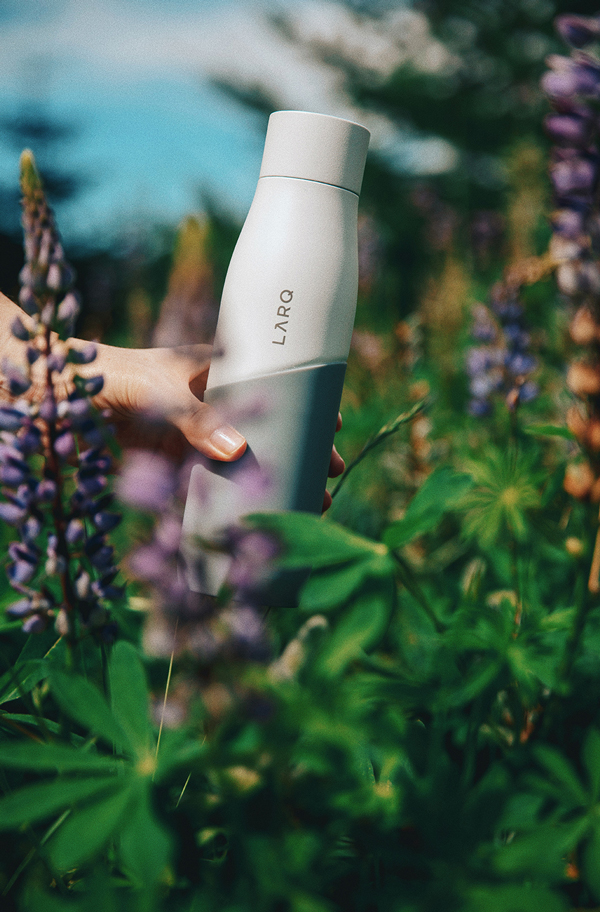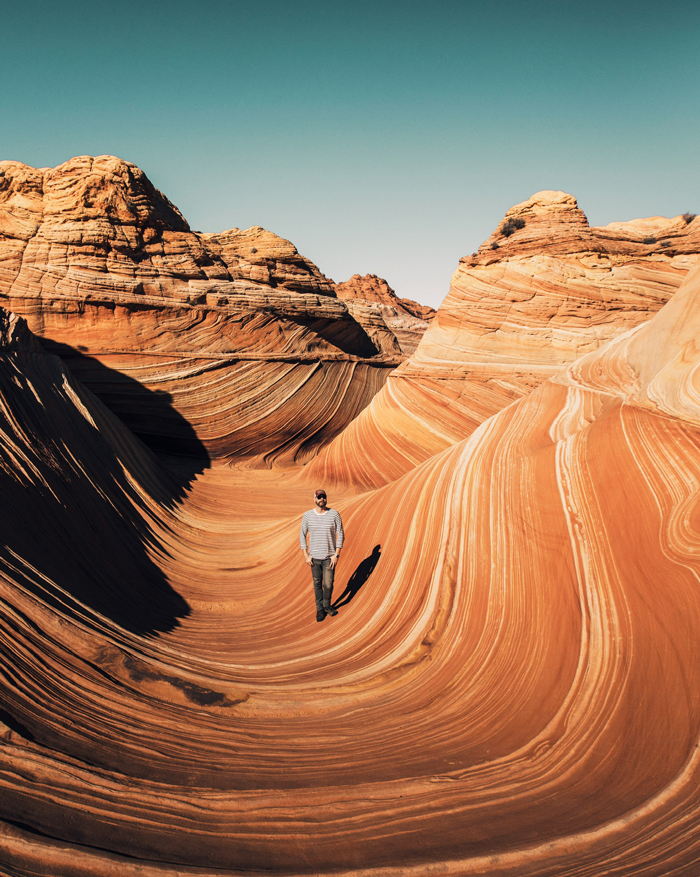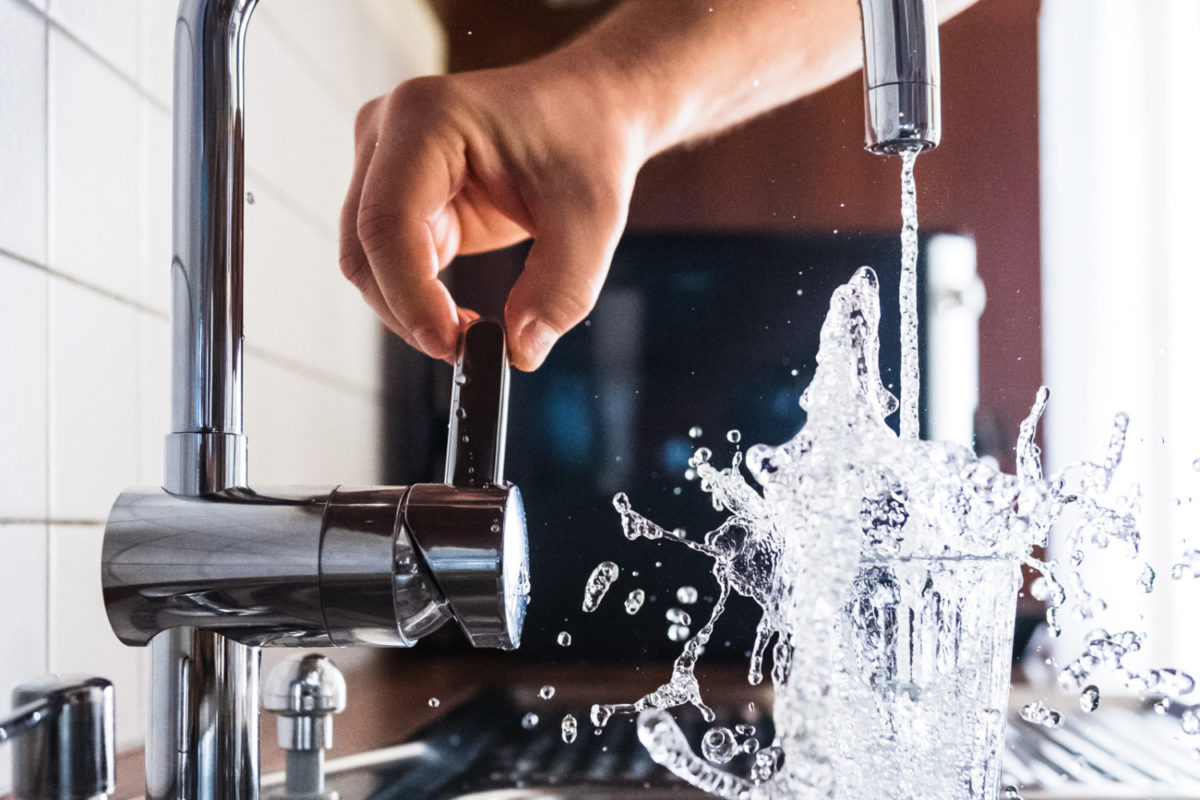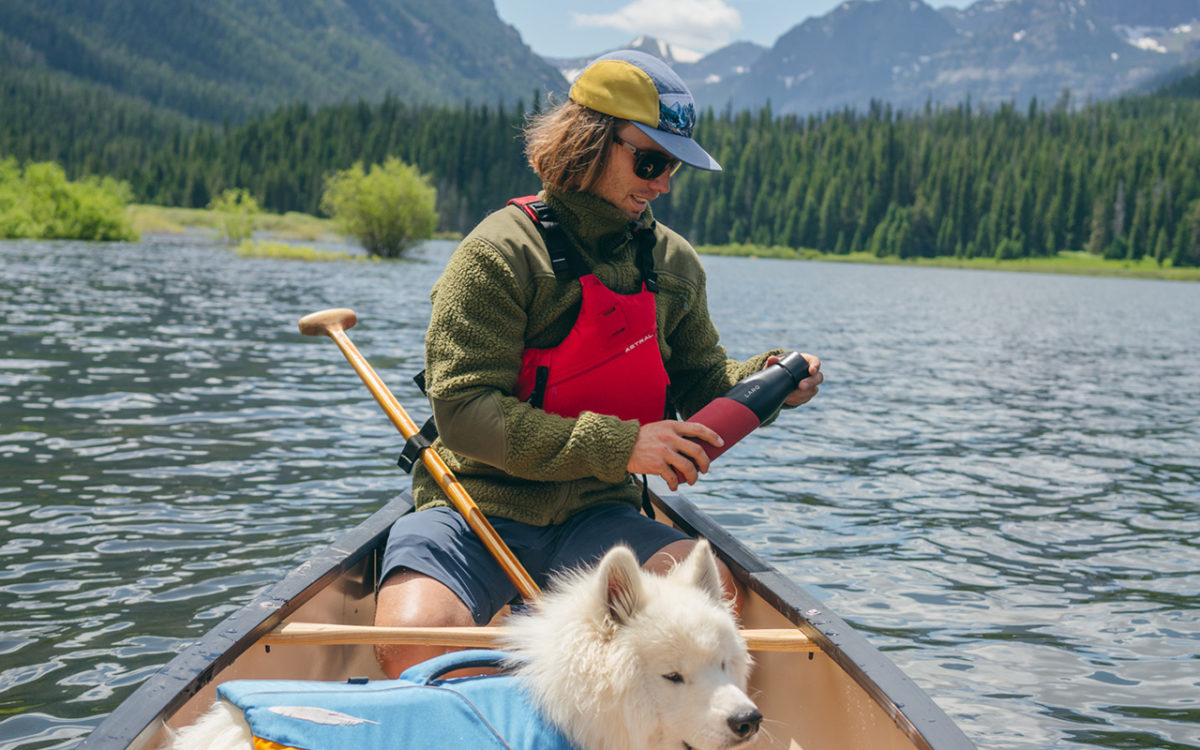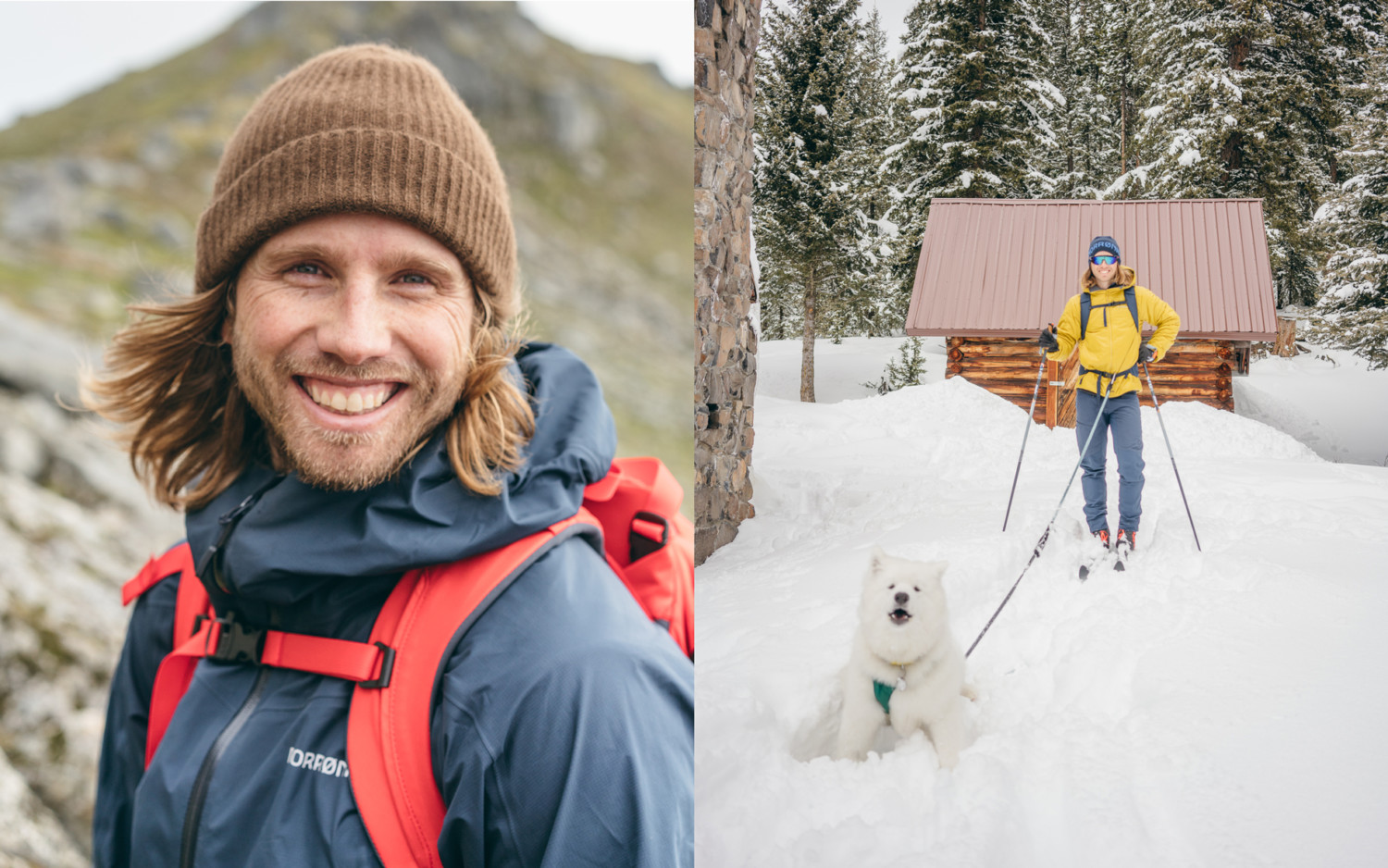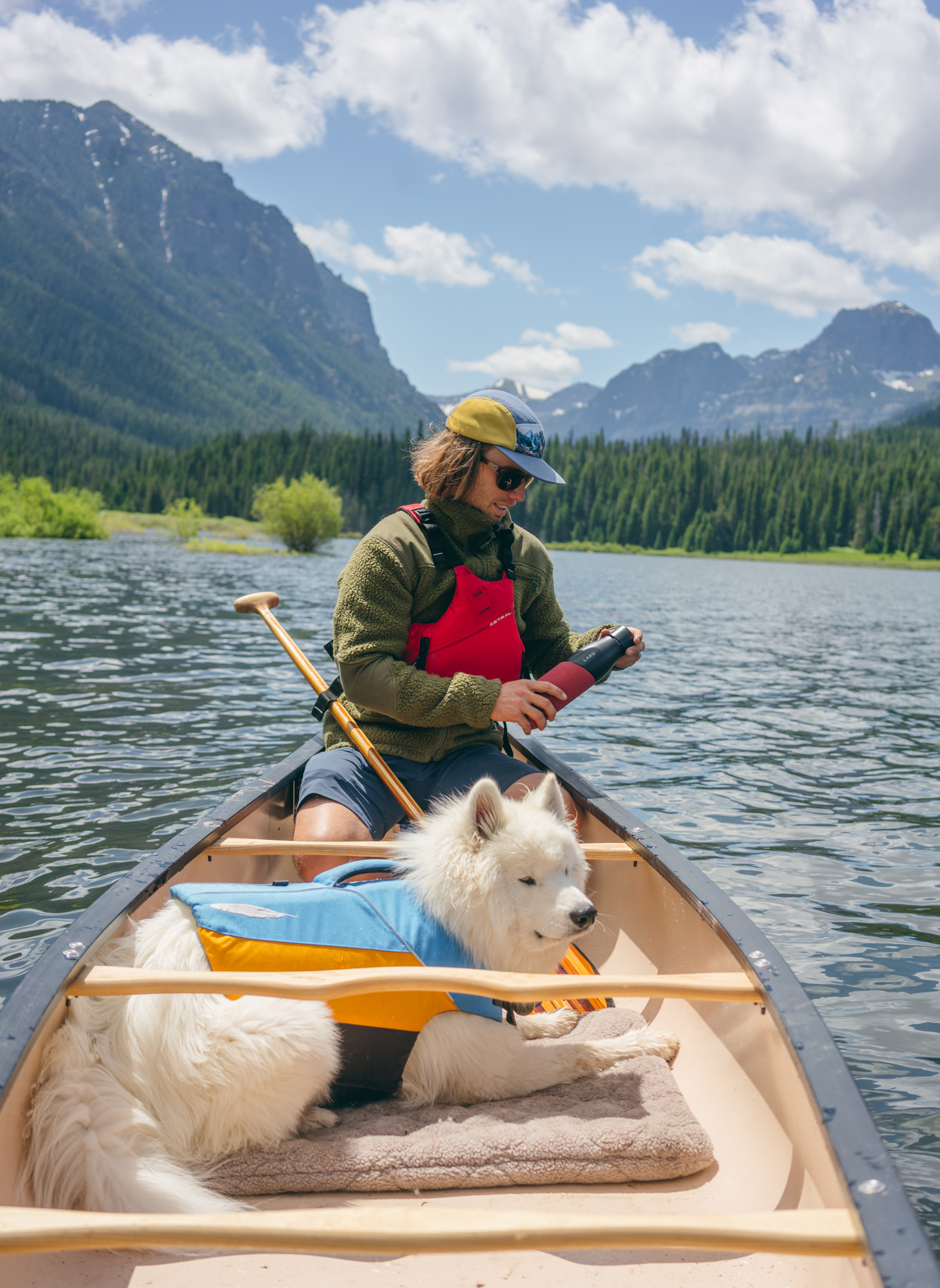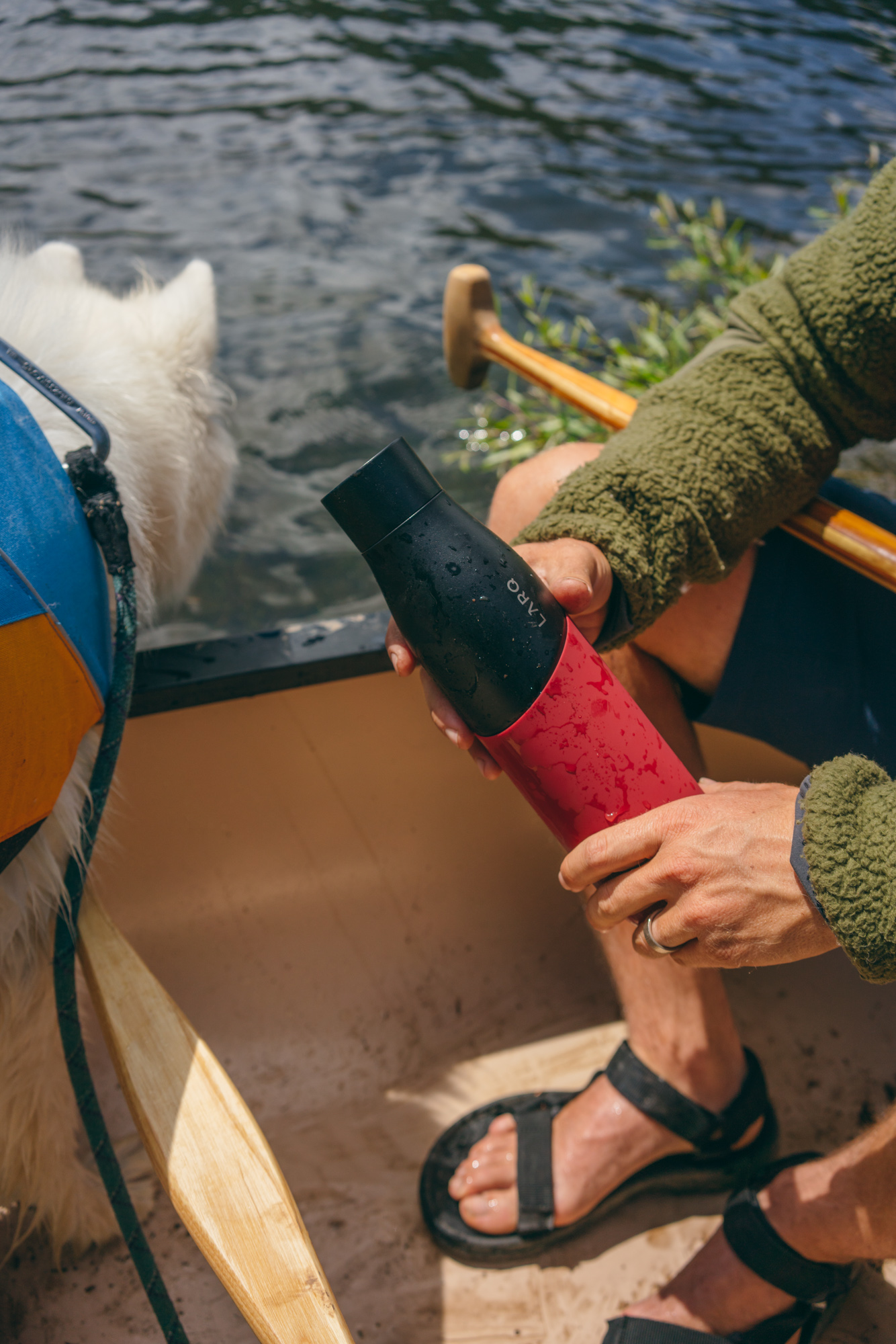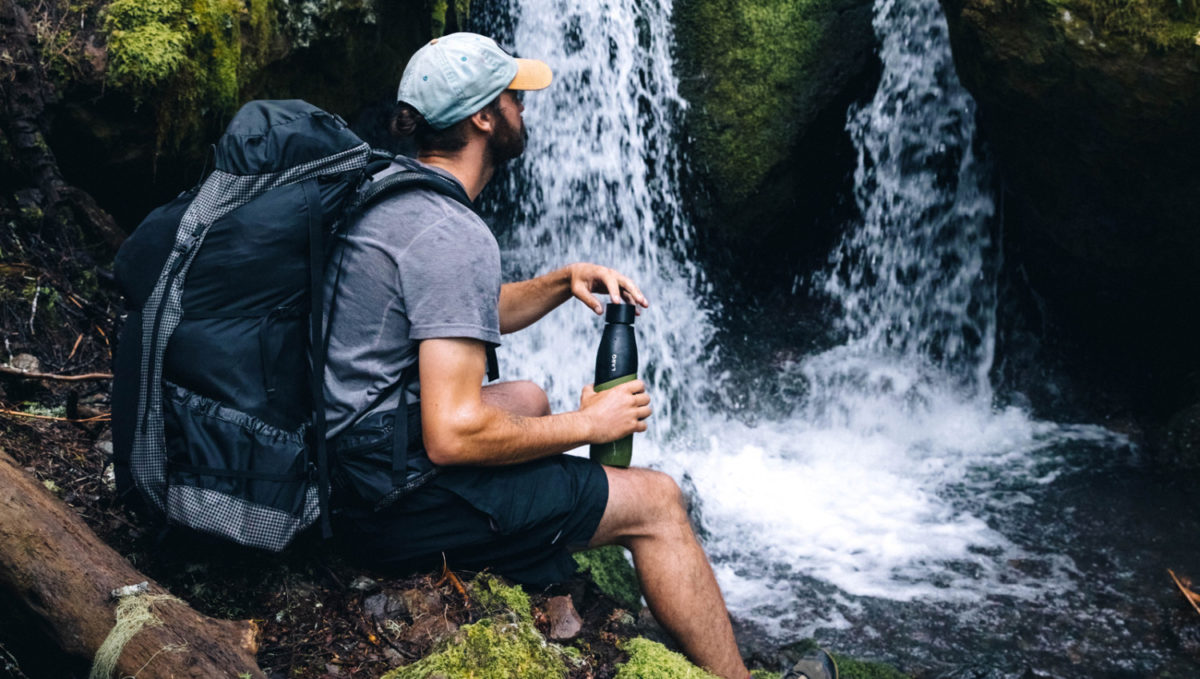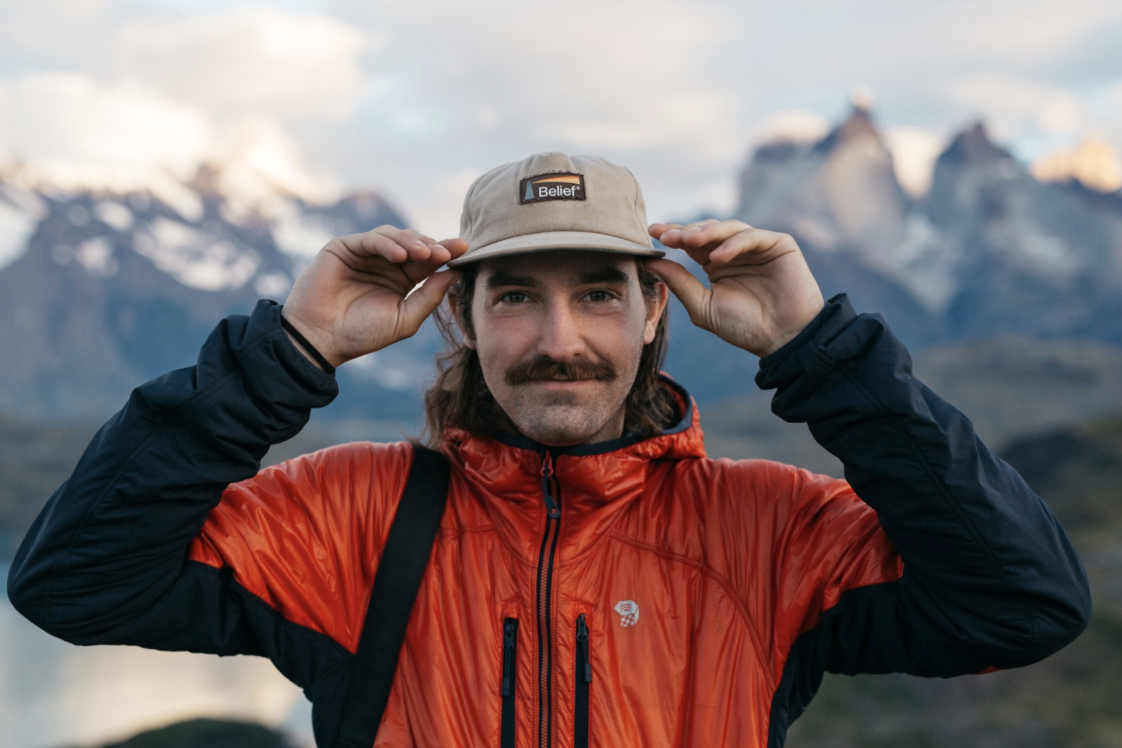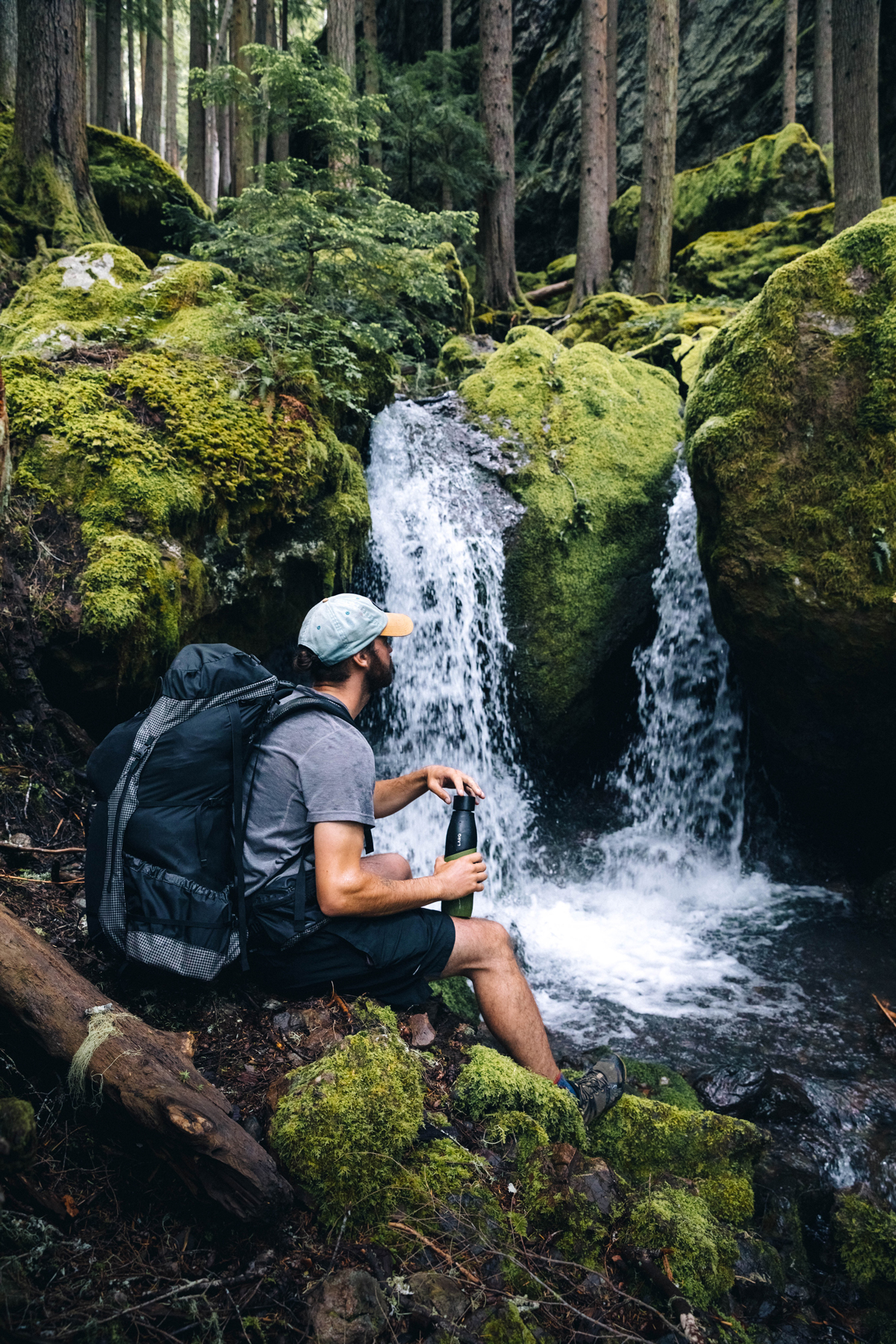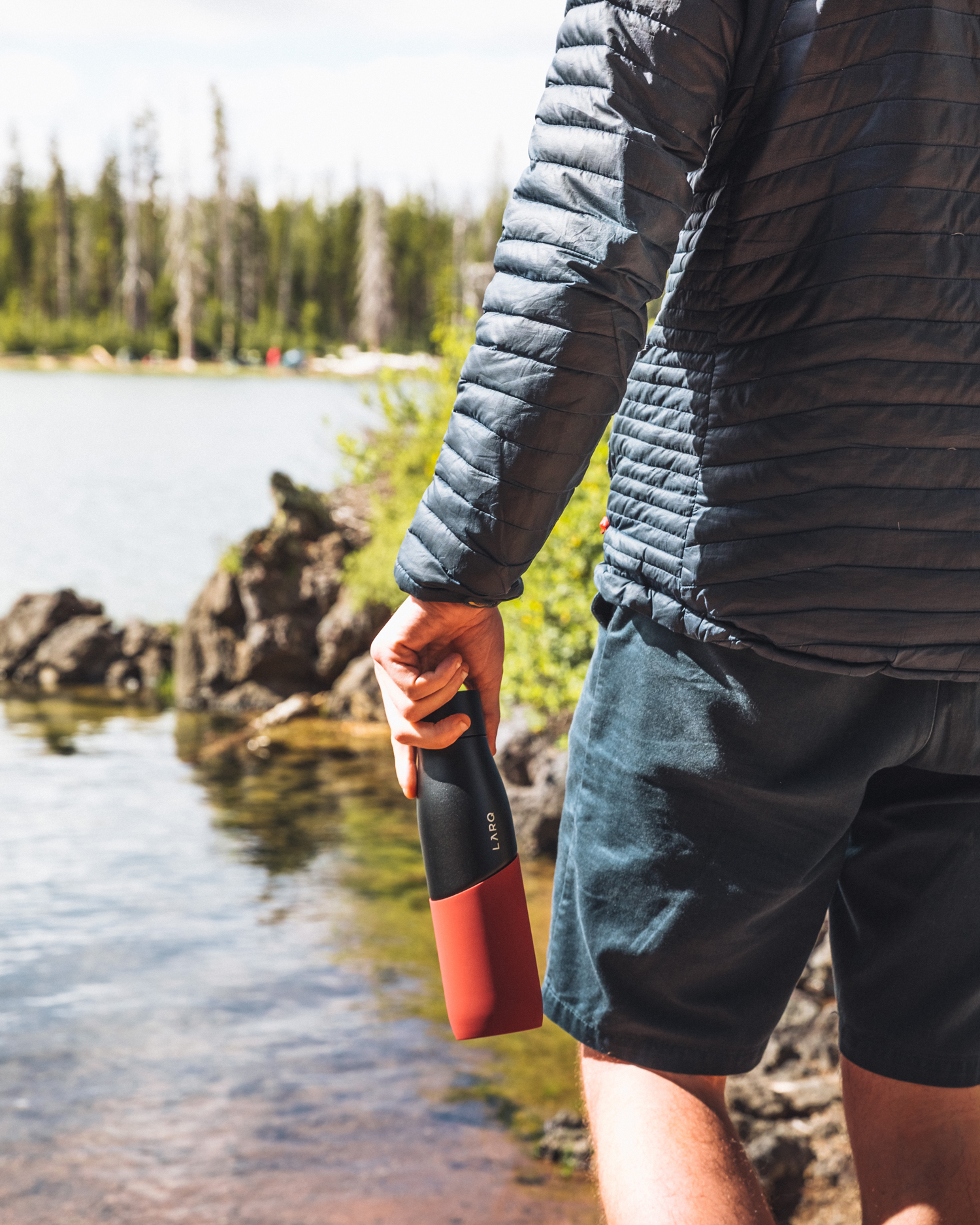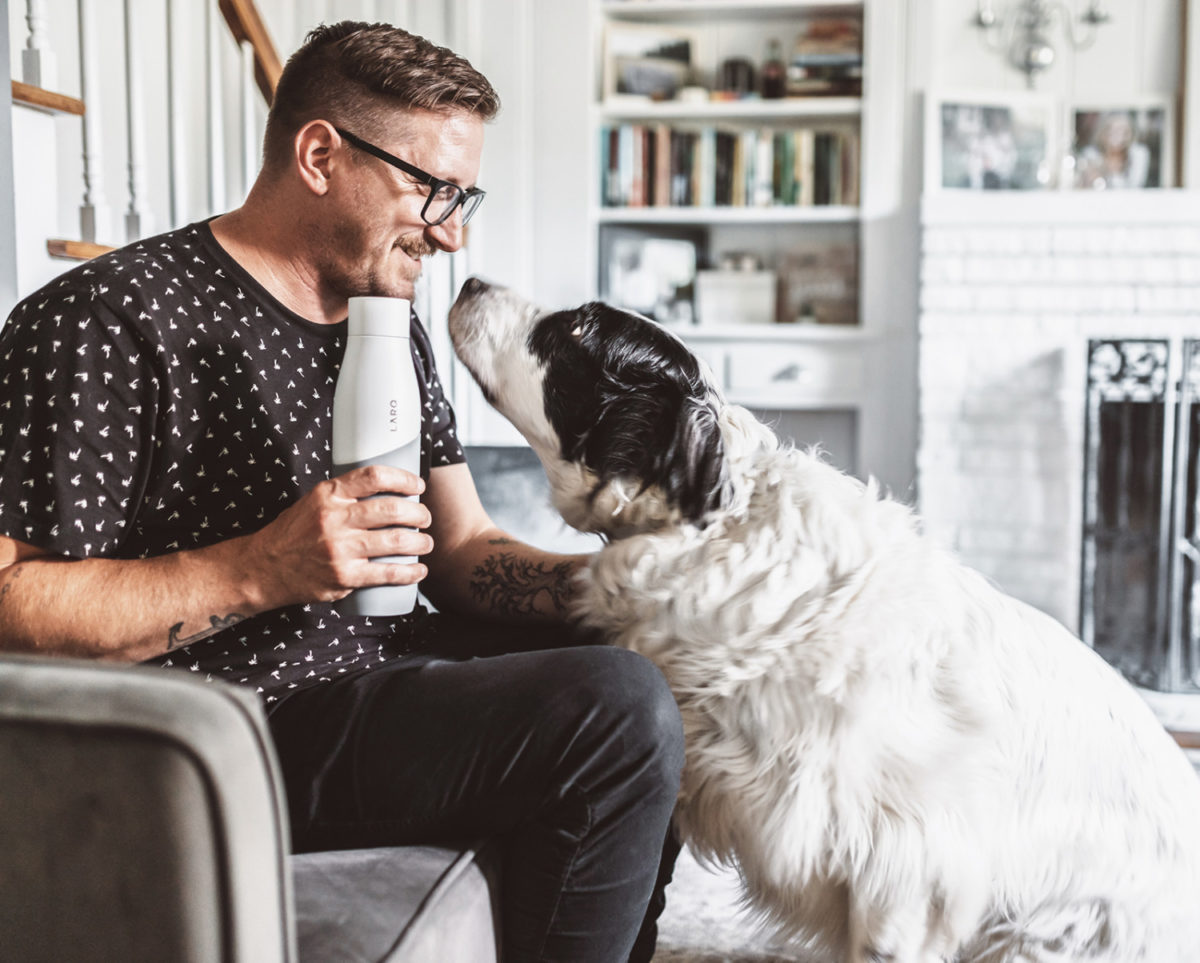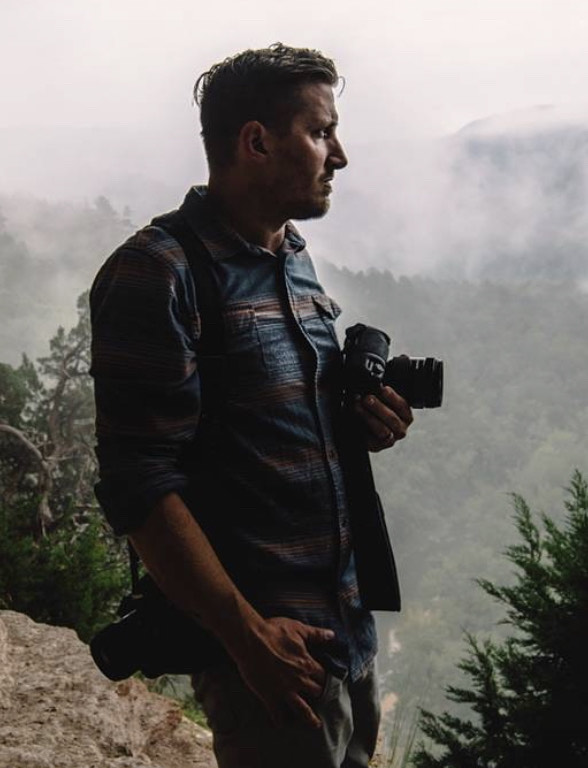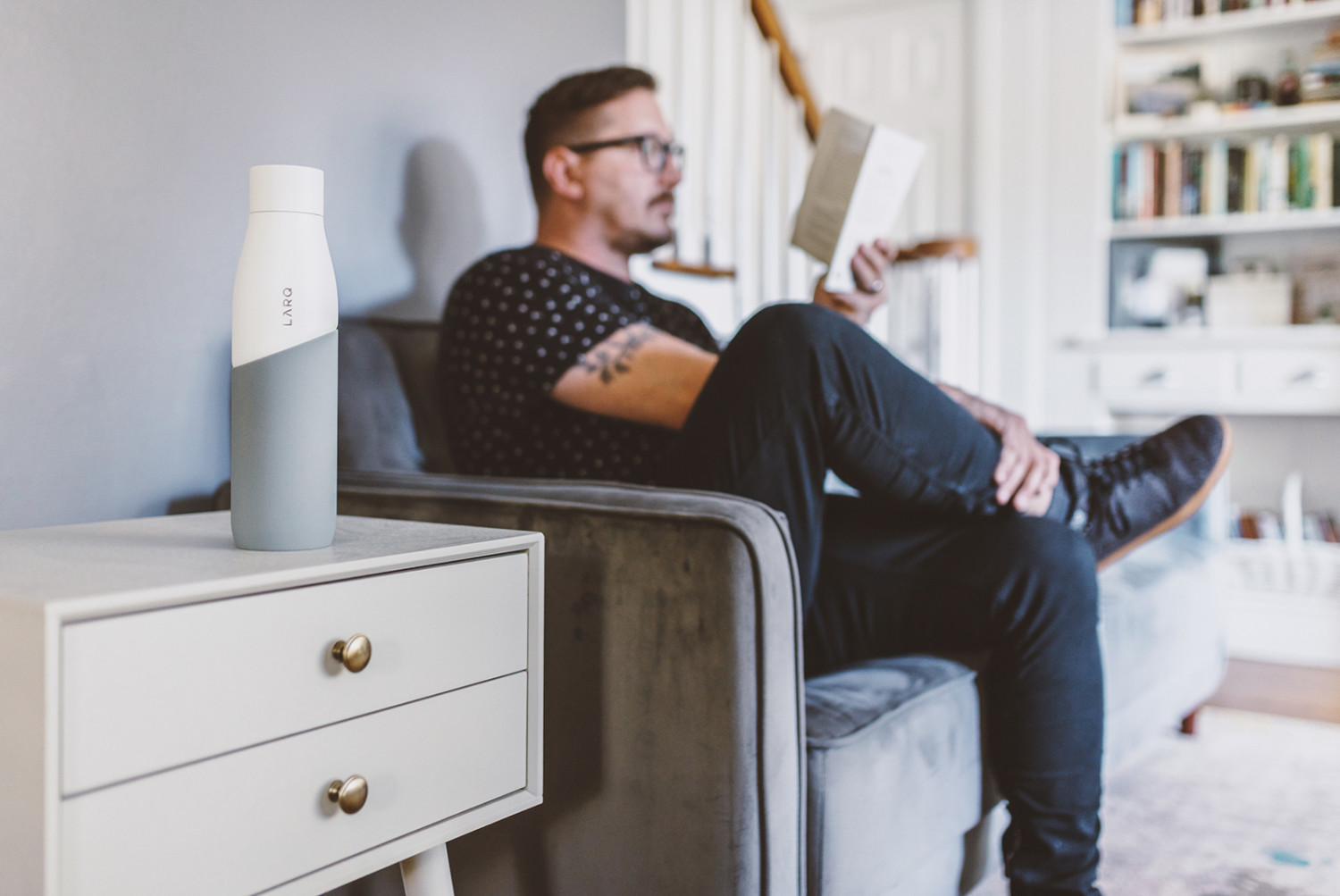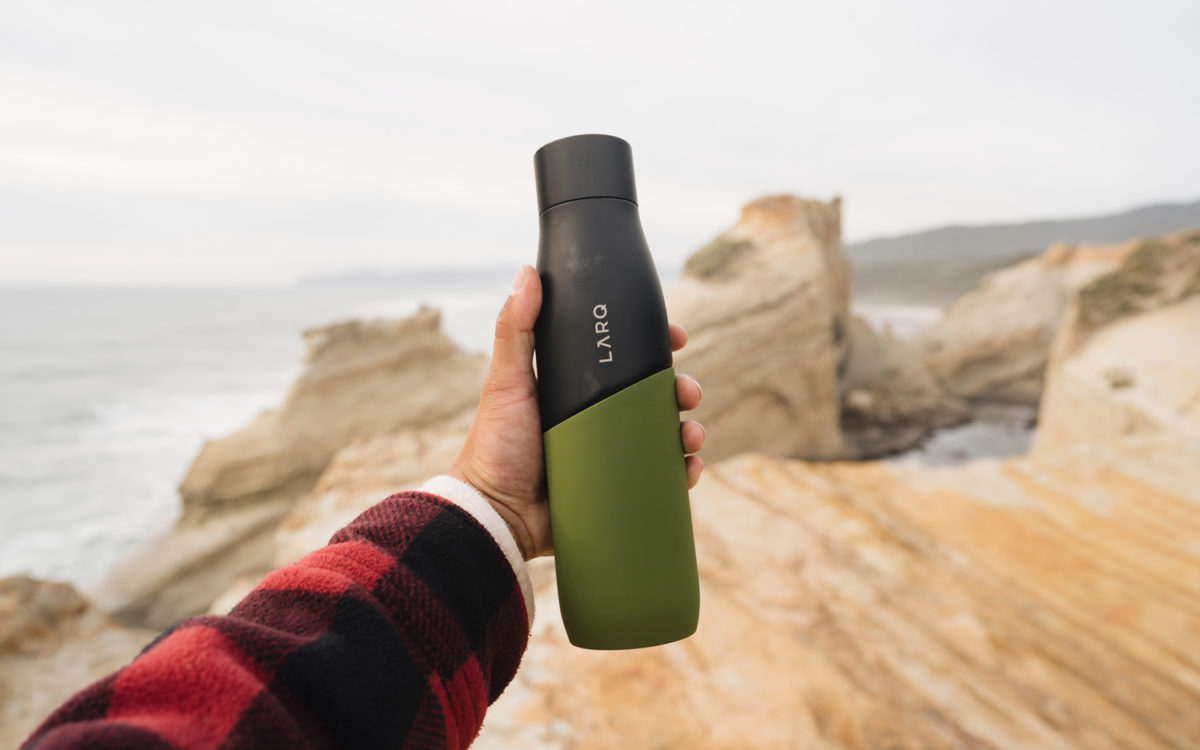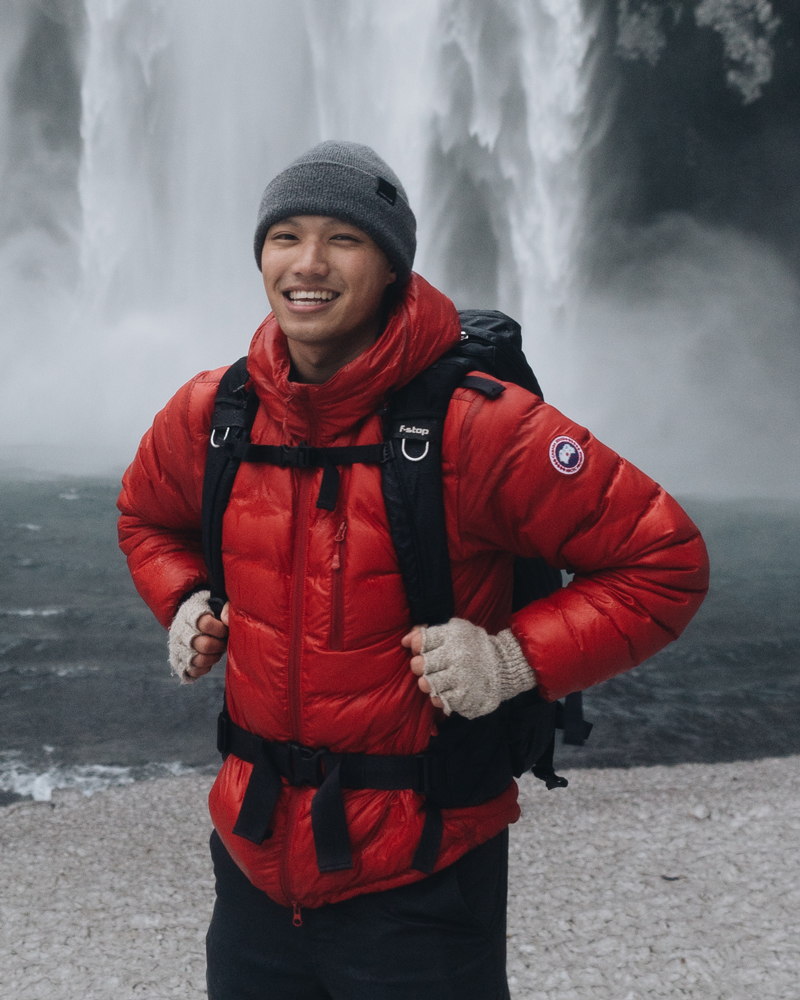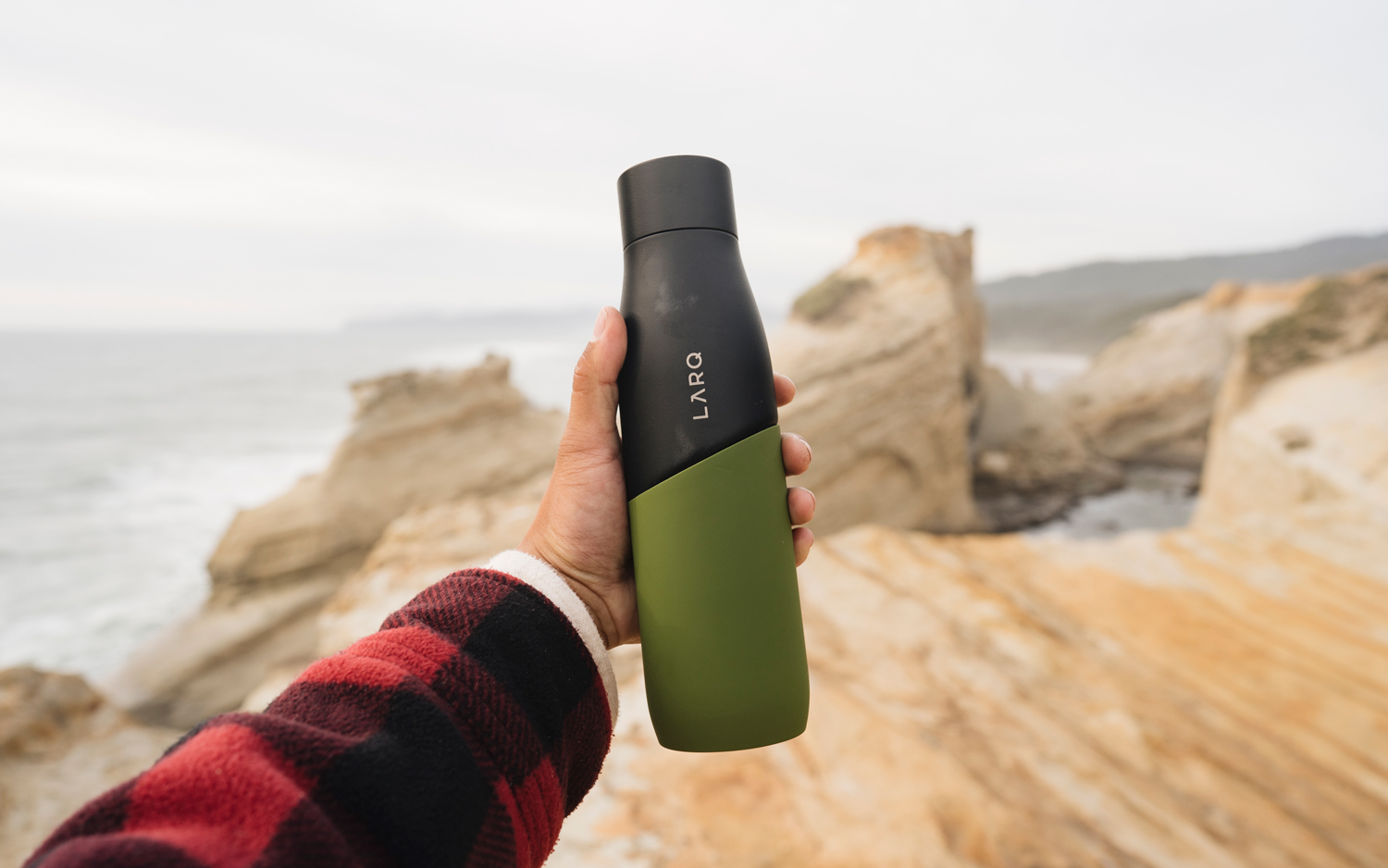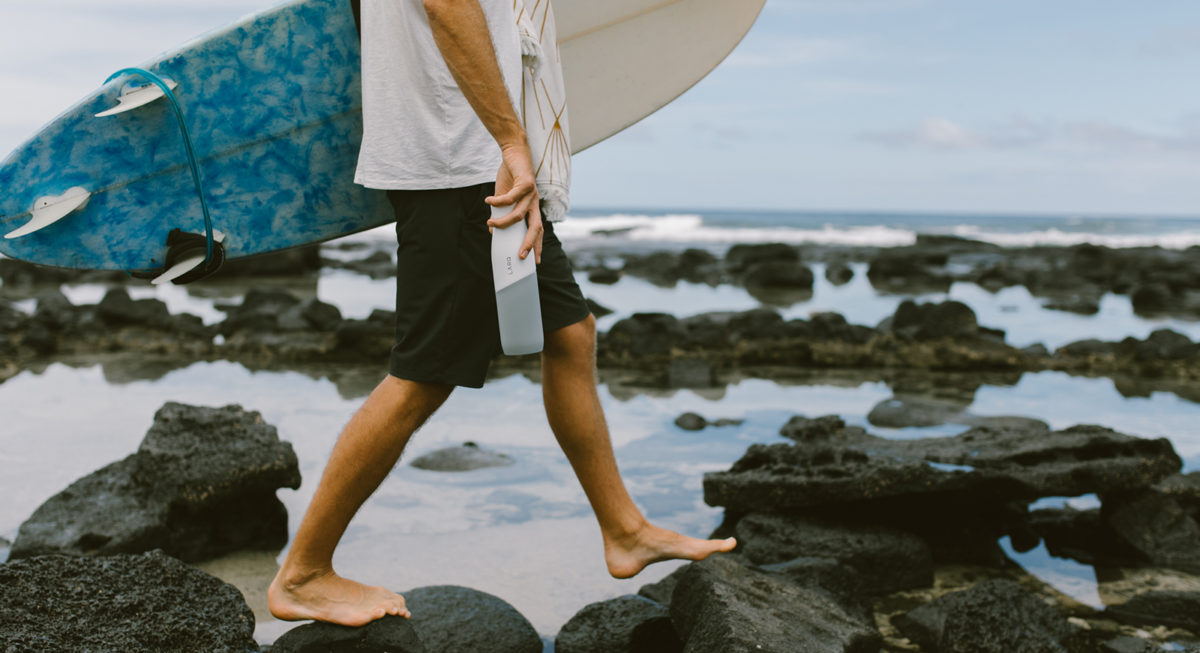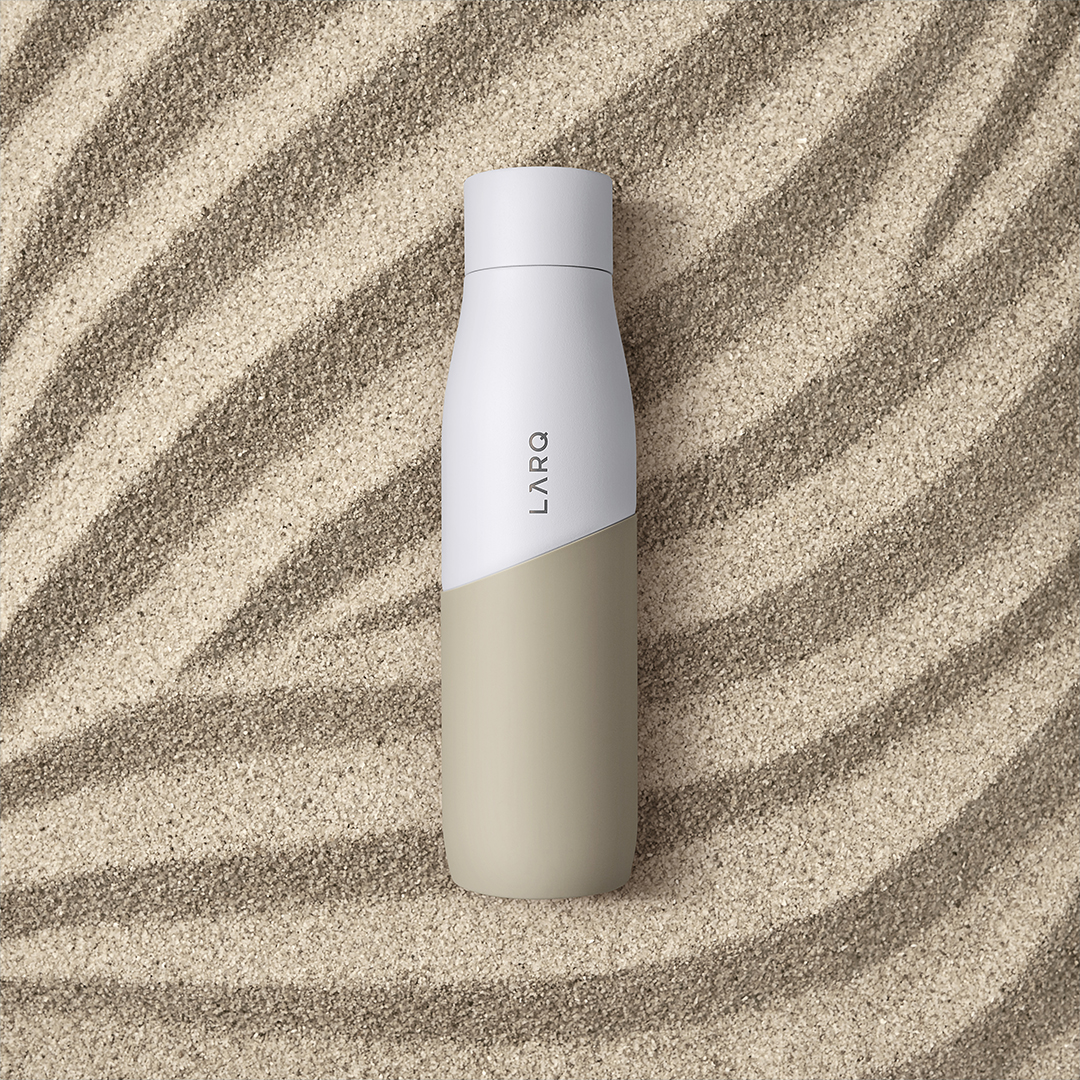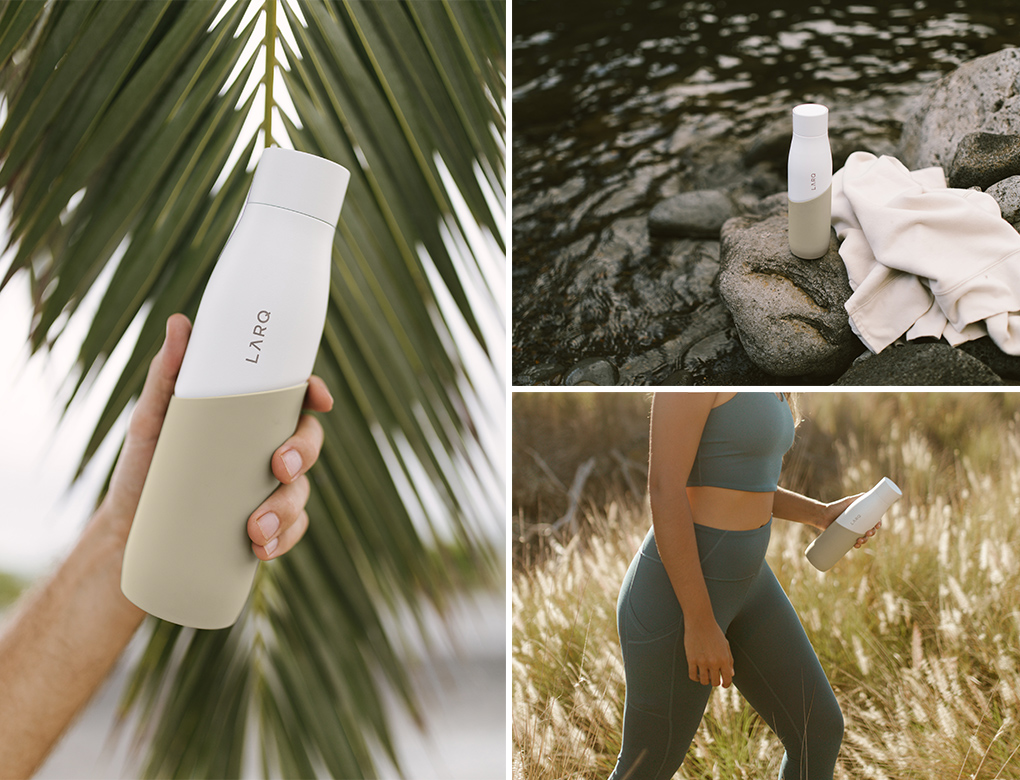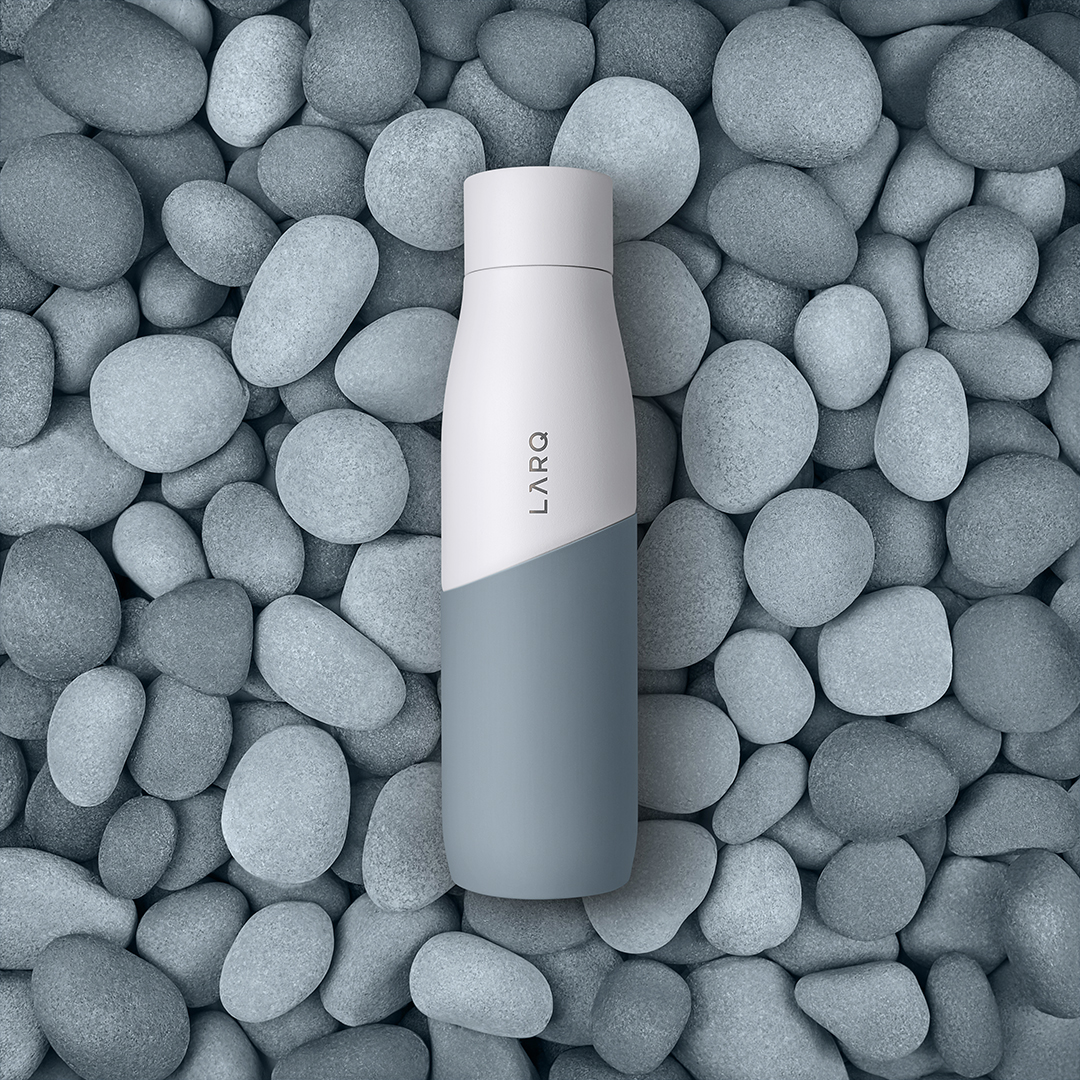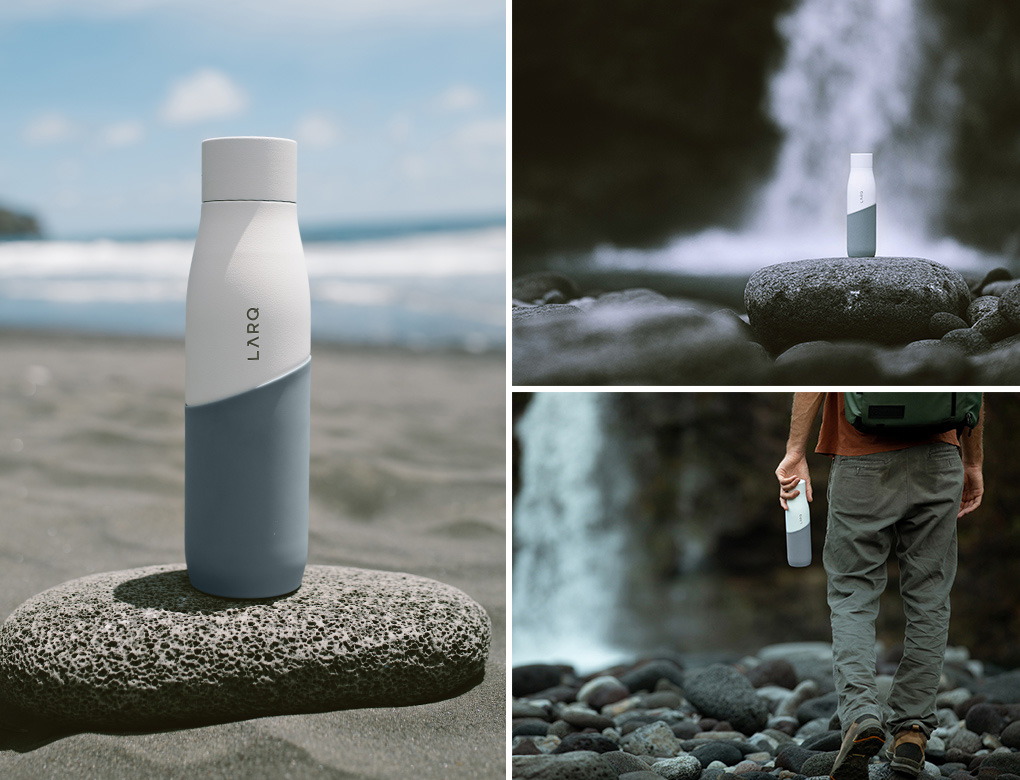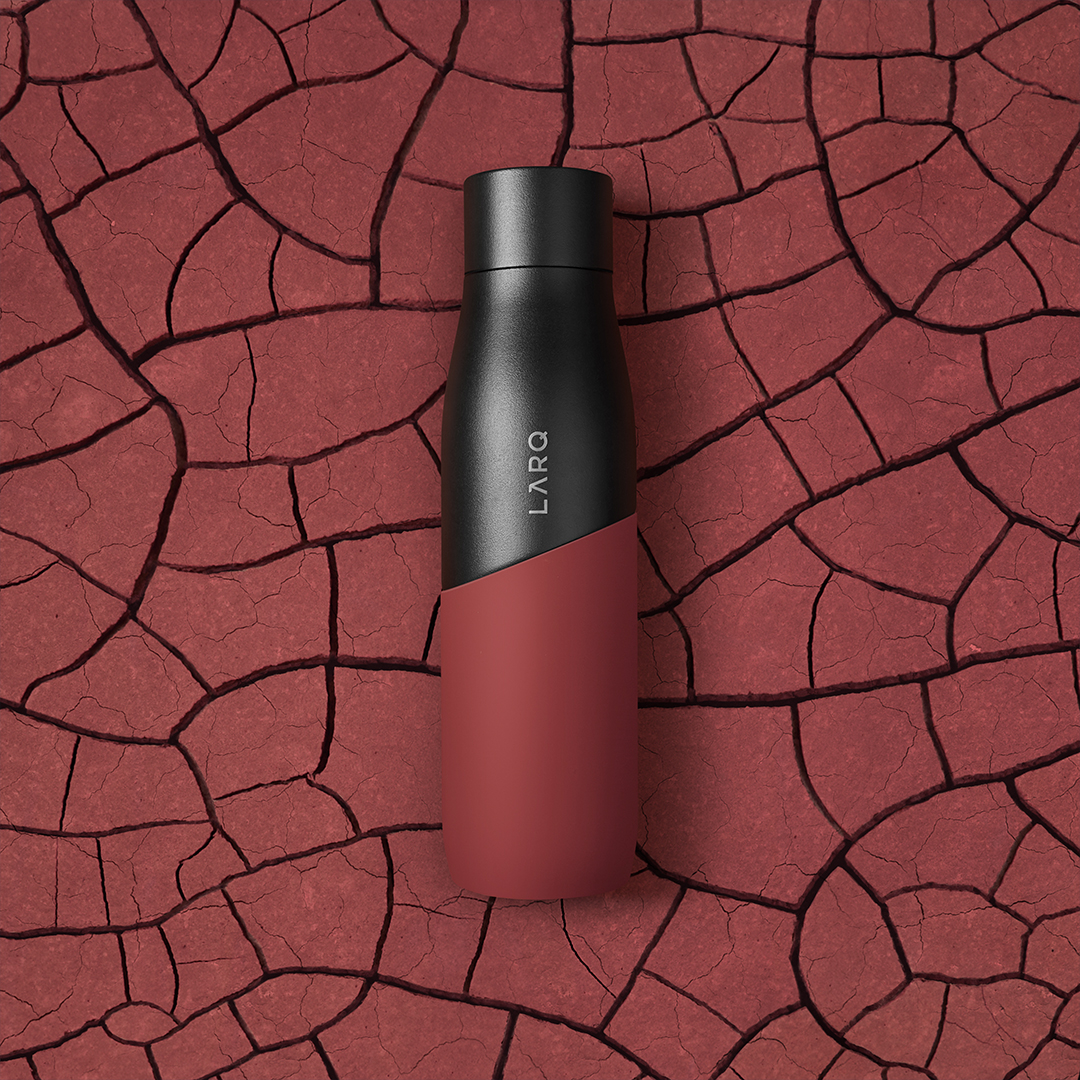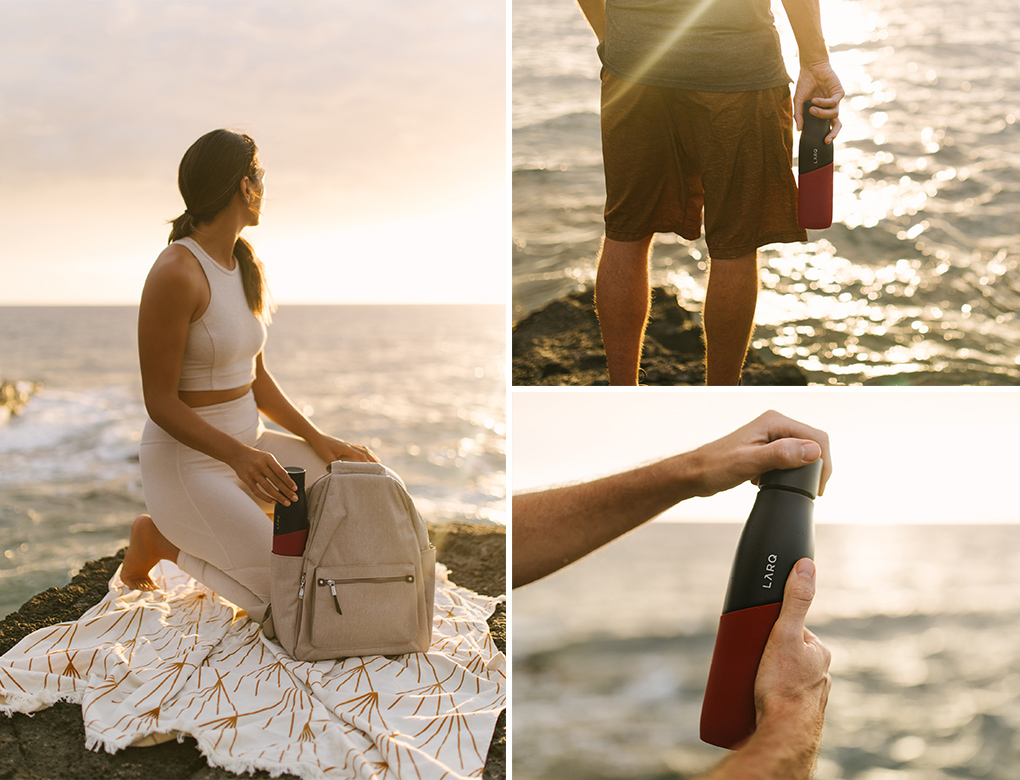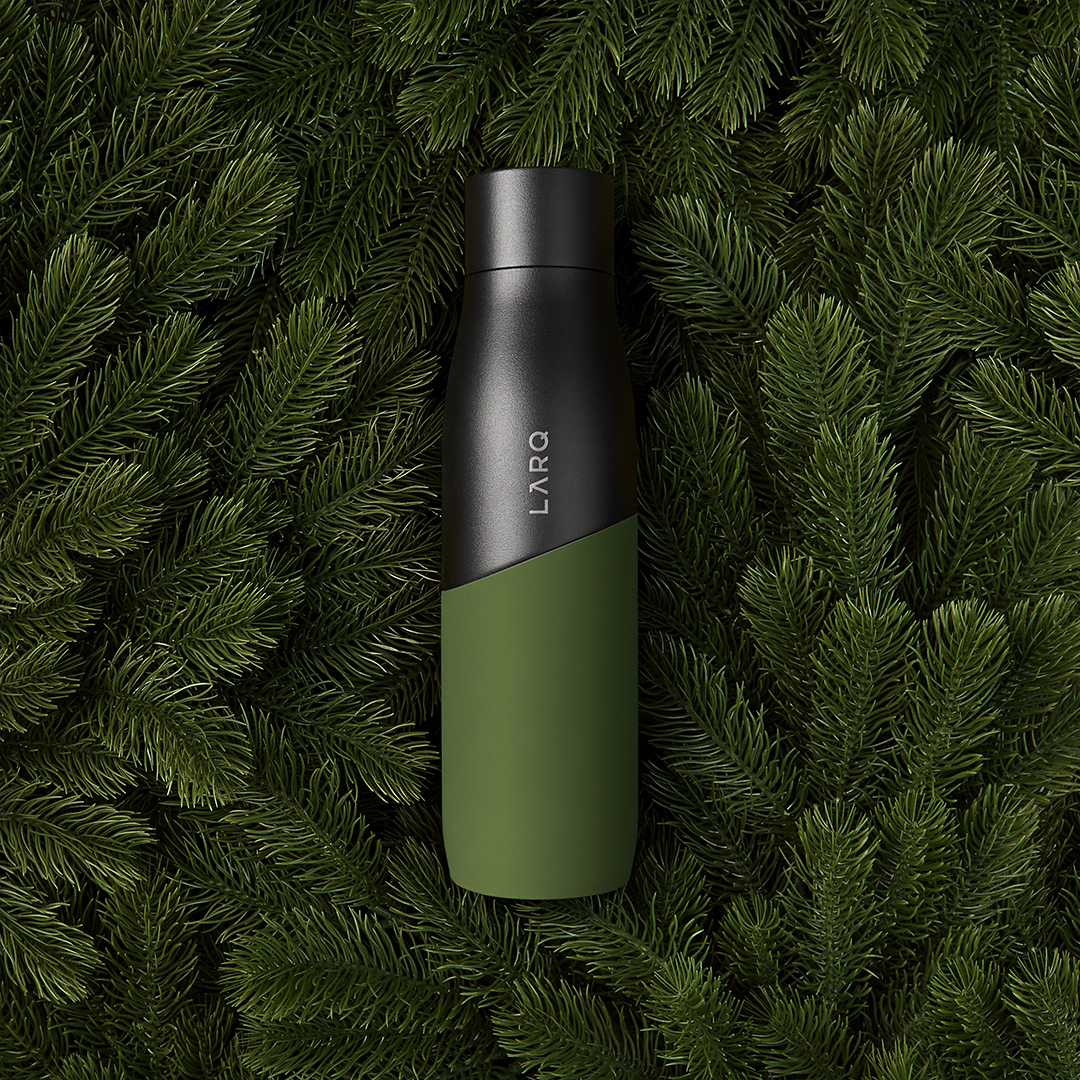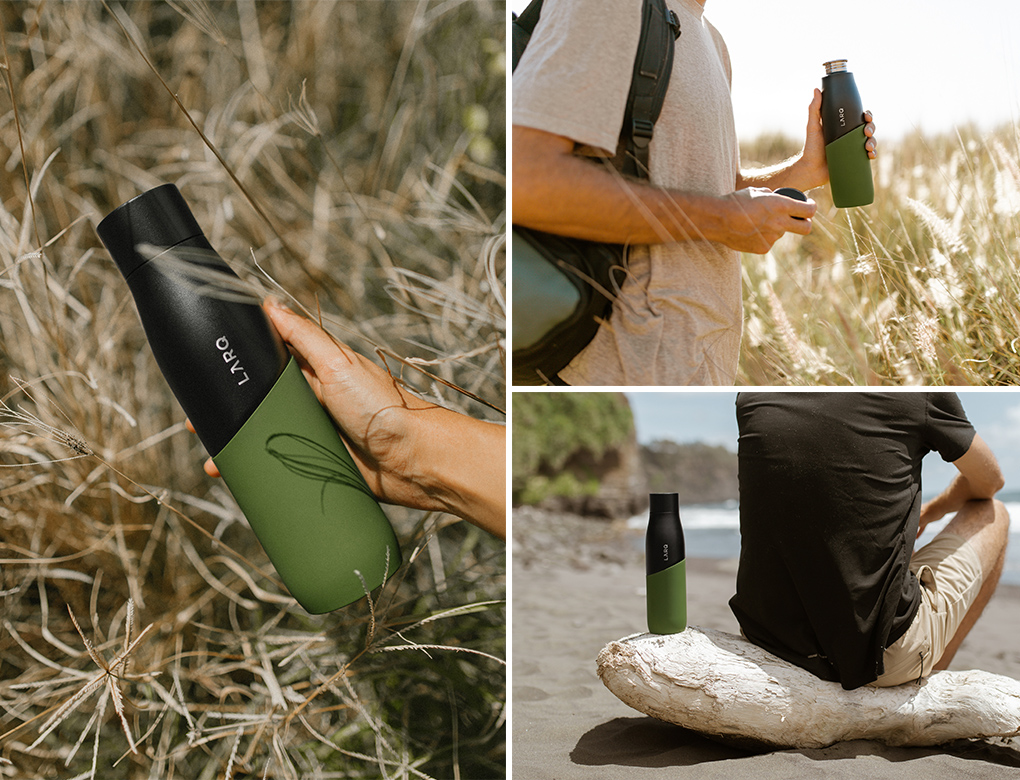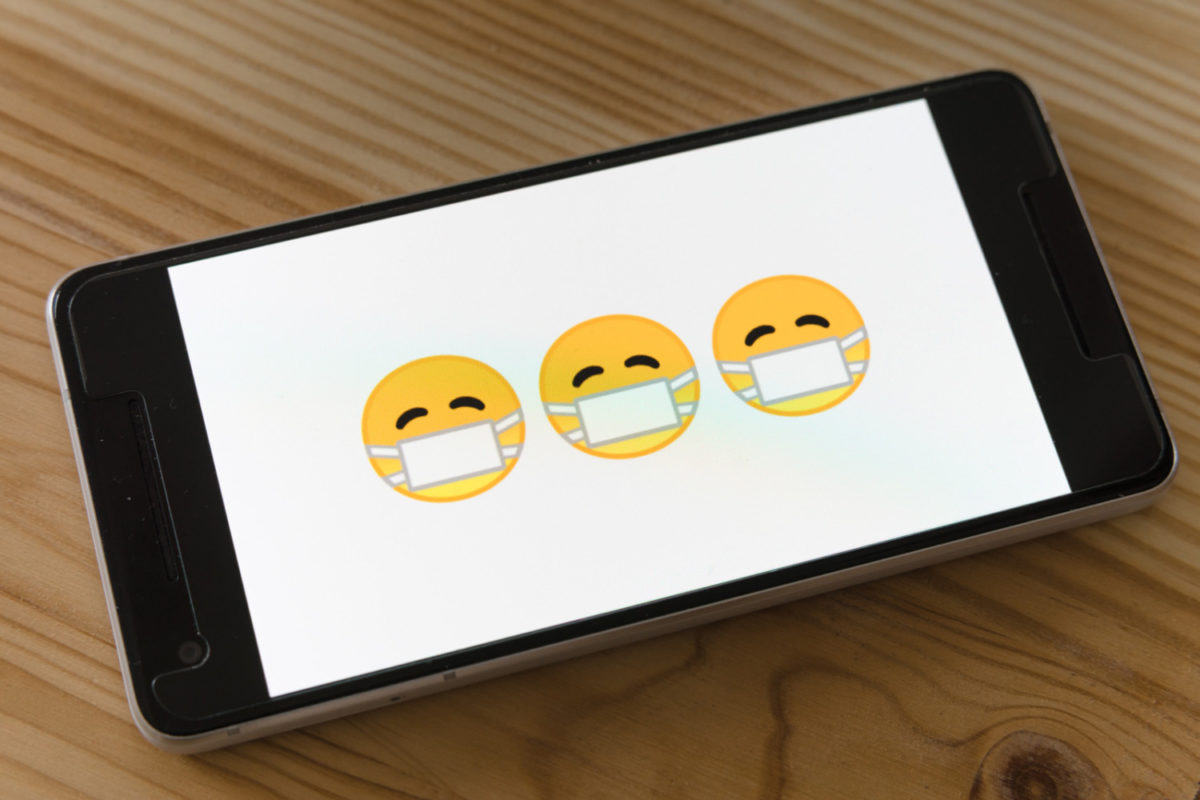The LARQ Pitcher is the first multi-stage countertop water filtration system that goes beyond filtration to not only eliminate pollutants but also prevents bio-contaminant growth.* The LARQ Pitcher opens up a whole new class of water filtration systems.
*In lab testing, PureVis prevents and deactivates naturally occurring heterotrophic bacteria that may cause odor and impact the taste of water compared to non-UV treated water pitchers.
Brilliantly clean water beyond filtration.
What does “brilliantly clean water beyond filtration” mean?
It’s more than just a catchy tagline. The LARQ Pitcher offers exceptional filtration of common contaminants with completely reimagined filters that challenge what you know about traditional filters today. And that’s just the first step.
With the filtration of chemicals in treated tap water, filtered water is susceptible to bio-contamination—in other words, it’s literally unprotected water, a perfect breeding ground for bacteria. The LARQ Pitcher is the first countertop water filtration system to have the ability to prevent bio-contaminant growth with our proprietary PureVis™ UV-C LED technology. Learn more.
How does PureVis™ prevent bio-contaminant growth?
Our proprietary PureVis™ technology uses 280 nanometers of non-toxic UV-C LED light. This germicidal range of UV-C light is invisible to the eye and catastrophic for bio-contaminants. The UV-C light destroys the DNA of bio-contaminants. Read more about our technology here.
Why reinvent the pitcher?
Traditional water pitchers on the market today mostly improve the cosmetic profile of water like the taste but need serious improvements on performance. The majority of water you drink is at home (even more true in the current pandemic), making it more important than ever for your water pitcher to purify effectively and provide you with crisp, clean drinking water. This is where the LARQ Pitcher comes in, but more on the science-y stuff later…
First, let’s talk about the water crisis that’s impacting the environment and our health.
An aging water infrastructure has health consequences
- Did you know the U.S. water safety standards haven’t been updated in over 50 years?
- 27 million Americans are served by water systems violating health standards established by the Safe Drinking Water Act.
- Additional contaminants that emerge from the water mains and pipes in aging homes are never reported in municipal water quality reports.
- In fact, a 2012-2014 study found that nearly 21,000 municipalities across the U.S. issued Boil Water Advisories for microbial contamination.
19 million people become ill each year due to contaminated water.
These issues contribute to an environmental crisis.
Since the LARQ Bottle launched in 2018, more than 95,637,301 single-use plastic water bottles have been saved from entering the landfill. Unfortunately, during the same time nearly 1,000,000,000,000 (that’s a trillion with a capital T) single-use plastic bottles have been tossed away–likely due to inaccessibility to clean drinking water.
It’s hard to make sustainable decisions if it means putting your health at risk.
Traditional Pitchers fall short of a complete solution
While traditional pitchers focus on improving taste, they only trap and collect pollutants, making the filter itself a source of contamination. In just 2 weeks, your pitcher is riddled with germs.
This is why we need to go beyond filtration.
The engineering team at LARQ pinpointed these fundamental issues with common filters after months in the lab. Based on our findings, we knew we needed to create an at-home water purification system that was uncompromising in achieving these priorities:
- Deliver the best-tasting water
Taste is important for our personal pleasure but also eliminates the need to reach for plastic bottles.
- Remove Contaminants
Waterborne contaminants like PFAS/PFOS, HAA5, VOCs, lead, mercury, copper, and cadmium can pose serious health risks. Even if your water tastes fine, it’s not necessarily safe to drink.
- Eradicate sources of reverse contamination
A system that goes beyond filtration to keep the water and vessel clean.
- Intelligent filter replacement
Water consumption varies greatly between households, and filter lifetime is notoriously difficult to track. Changing the filter too soon is wasteful, and delaying filter replacements leave the potential for reverse contamination. This model simply doesn’t work for us.
- Better filters for the planet
Traditional filters, while better than plastic bottles, still produce a small mountain of plastic every year. We set to design a filter that is better for the planet and better for you.
With this blueprint, we were determined to create a water pitcher that could go beyond filtration.
Reimagined filters like you’ve never experienced before
The filters you’re probably accustomed to are these elongated tube-shaped clunky plastic filters that spit out filtered water from the bottom into your pitcher. These models on the market today do little more than removing chlorine and reducing a small handful of contaminants—a cosmetic treatment. Other heavy-duty filters will literally filter out everything from the water, including beneficial minerals, and making them impractical, wasteful, and frustrating.
We wanted to rethink the filter from the ground up, starting with first principles. The foundation of our filter had to be a sustainable material. A fundamental challenge in finding the right filter design was balancing filtering efficacy, with lifetime and filter speed. We knew we had to find the goldilocks zone of efficacy, sustainability, and practicality. This turned out to be no simple task. Early filter prototypes either clogged too easily or didn’t quite perform the way we wanted. We nearly gave up as we thought maybe a completely new filter redesign had fundamental limitations.
“What if the issue isn’t in the media mix but in the geometry?” asked Li Zhang, our Chief Engineer.
This was a moment of insight for the team. Traditional filters were elongated tube structures (the “classic” water filter look). We found that this worked fine to improve flavor and chlorine removal, but when this geometry is tasked with heavy metals they tend to clog easily due to its limited surface area.
By flattening the filter geometry we were able to maximize surface area for the perfect balance between efficacy, filter speed, and lifetime.
In terms of performance, our filters outperform filters in their class and last up to 50% longer than the leading filter.
We’re proud to announce that we will be offering two types of filters, giving you the flexibility to choose the option that best suits your needs.
The Essential Filter
Recommended for basic protection against common contaminants and improved taste. The Essential Filter removes:
- Chlorine
- Mercury
- Cadmium
- Copper
- VOCs
The Advanced Filter
Recommended for 360º protection against harsher contaminants and improved taste. The Advanced Filter removes:
- Chlorine
- Mercury
- Cadmium
- Copper
- PFAS/PFOS
- HAA5
- VOCs
- Lead
- Particulates
- Benzene
The Design
Thoughtful design is our pride and joy—aside from our PureVis™ technology, of course. Because it wouldn’t be a LARQ product if it weren’t ripe for another design award, we’ve also made sure the LARQ Pitcher is something you’ll love having on your countertop, or at the dinner table when you’re entertaining. Can you say “kitchen envy”?
Check out these brilliant colors our Insiders helped us choose!
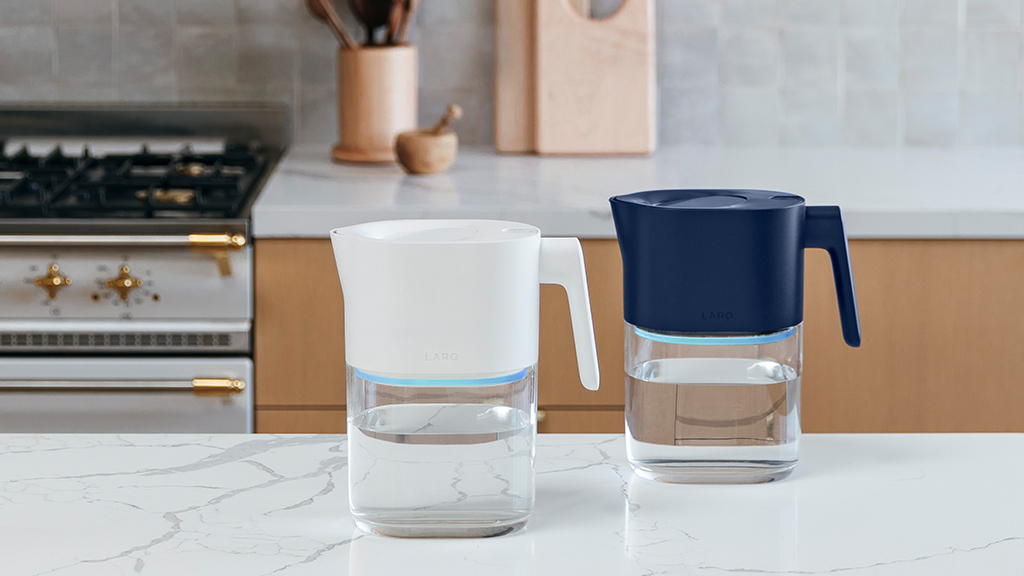
We wanted the overall appearance of the pitcher to look elevated, feel sturdy, and to be easy for people of all ages to handle. We love the look and feel of a glass pitcher but glass is fragile and heavy—not ideal for a pitcher you want to use long-term. With that in mind, we decided to use a BPA-free polymer —a premium material that perfectly mimics the look of glass, and we think you’re going to love it. It’s BPA-free, BPS-free, tough, lighter, and easier to handle.
It had to be easy to fill up, too. Instead of using all of your fingers to pry open a lid, we made refilling the LARQ Pitcher easy-peasy. The spring-loaded door drops when the water from your faucet comes in contact, and the ultra-smooth finish of the lid allows the water to glide into the top chamber effortlessly–we call this the one-handed fill.
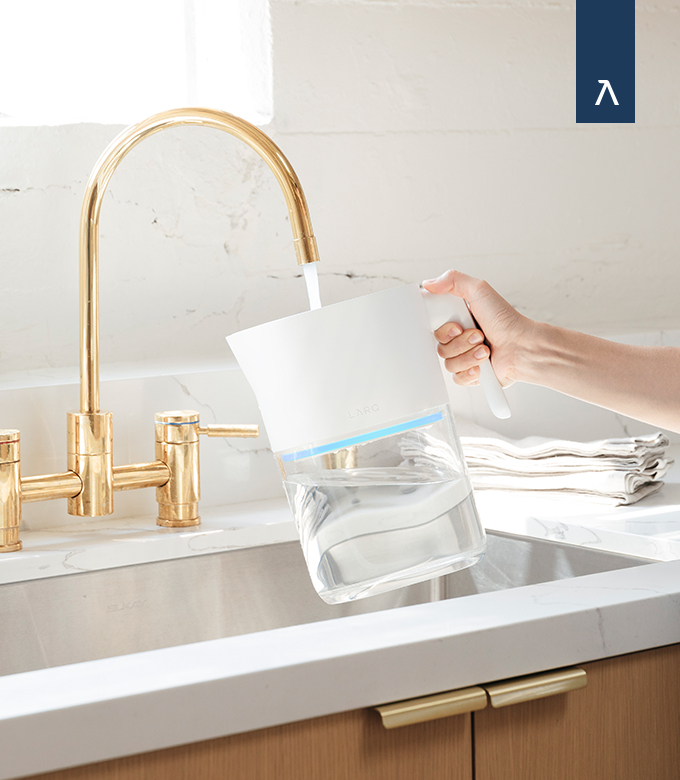
While we share the same core PureVis™ UV-C technology between the LARQ Bottle and the LARQ Pitcher, we wanted to add features that were uniquely important for an at-home product, and it had to be effective and intelligent. We added sensors for intelligent filter life tracking and integrated sensors that monitor your local water quality—but more on that neat stuff later! To achieve the needed efficacy and appropriate sensor placement, we designed the PureVis™ technology to sit inside the pitcher hopper. We call it the PureVis™ Wand. The PureVis™ Wand is removable, which means the pitcher is dishwasher-safe.
As for our signature lighting feature similar to our LARQ Bottle, the LARQ Pitcher features a racetrack-like LED situated under the hopper. When it illuminates in each of its colors, there’s a soft glow that instantly catches your attention. The LARQ Pitcher will emit a breathing blue light when activated manually or during an automated purification cycle. When your filter needs to be replaced, the LARQ Pitcher will emit orange light.
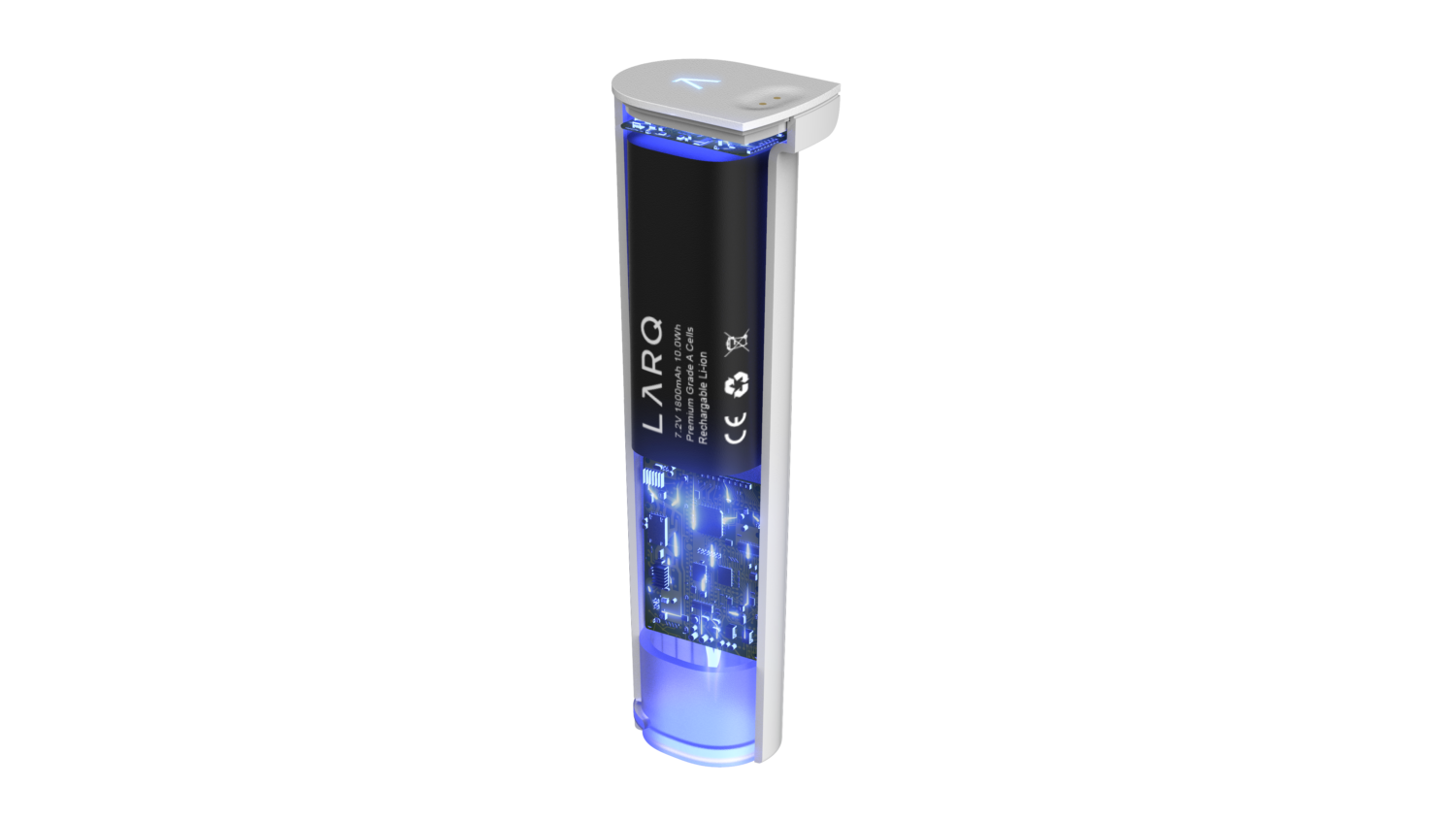
The Complete Solution
Many months, countless hours, numerous cups of coffee, and innumerable Zoom calls later, we’re thrilled to introduce you to the LARQ Pitcher—the most advanced countertop water filtration solution the world has ever seen.
Don’t just filter—purify.
Traditional pitchers only trap and collect pollutants, which actually ends up reverse-contaminating your water. That’s why we invented the LARQ Pitcher. The LARQ Pitcher goes beyond filtration with unique 2-step filtration and purification.
Step 1 – Better filtration
Our innovative plant-based filters effectively remove pollutants like lead, chlorine, mercury, PFAS/PFOS, HAA5, cadmium, VOCs, and more to deliver the best-tasting water without compromising efficacy.
Step 2 PureVis™ technology
Go beyond filtration with our proprietary PureVis™ technology, which improves the quality of your water by preventing bio-contaminant growth*. Learn more. *In lab testing, PureVis prevents and deactivates naturally occurring heterotrophic bacteria that may cause odor and impact the taste of water compared to non-UV treated water pitchers.
Why upgrade to the LARQ Pitcher?
It tastes damn good
Our unique 2-step filtration and purification process leave you with perfectly crisp drinking water—which means better coffee, better tea, better cooking, and better hydration.
Intelligent filter life tracking
Not sure when to replace your filter? Every household is different. The LARQ Pitcher is equipped with intelligent filter life tracking to let you know exactly when to replace the filter with glowing orange light—better for the planet and your wallet.
Self-cleaning
PureVis™ technology activates every 6 hours to keep your water clean by preventing potential bio-contaminant growth. The LARQ Pitcher will glow with a blue light to let you know when it’s purifying.
More sustainable
Traditional filters are made of clunky plastic that pollutes our environment. Our reimagined filters use 75% less plastic and even last 50% longer than traditional filters without sacrificing performance. No compromises here.
App-connectivity
Last but not least, the LARQ App (iOS only) is compatible with the LARQ Pitcher. The integrated sensors we mentioned earlier will connect to the app, allowing you to monitor and better understand the quality of your local water supply to give you personalized filter recommendations.
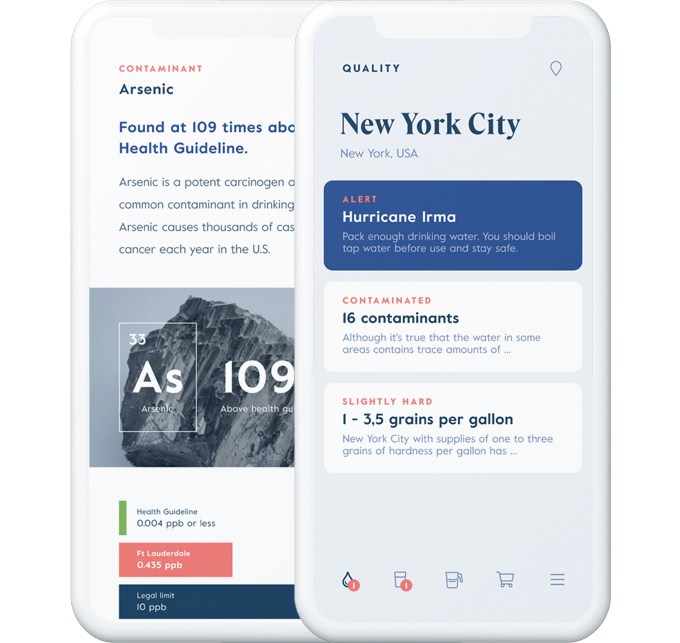
Intelligent filter life tracking takes the guesswork out of filter replacements. Based on the data tracked with the nifty sensors in the LARQ Pitcher, the app will recommend the perfect time to order replacements—no need to count the days. Oh, and in case you were wondering, you can easily order replacements directly in the app. Brilliant.
Want to be among the first to experience brilliantly clean water beyond filtration?
